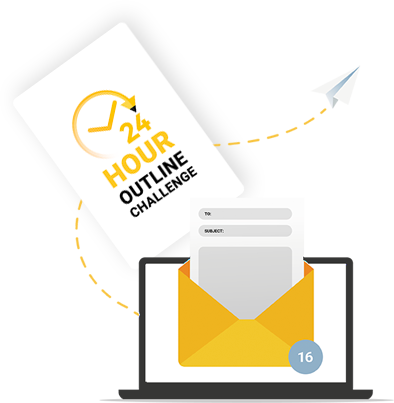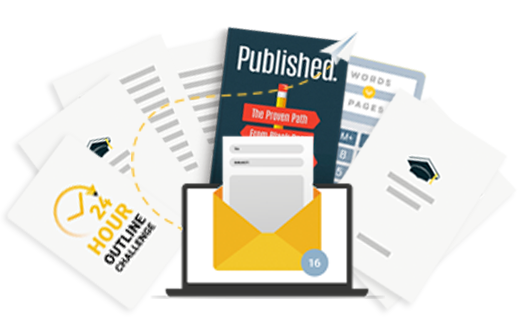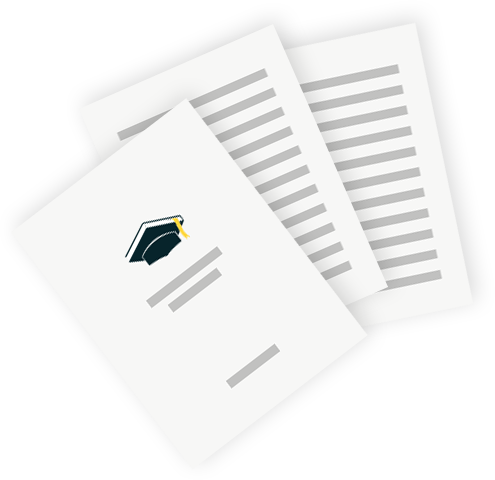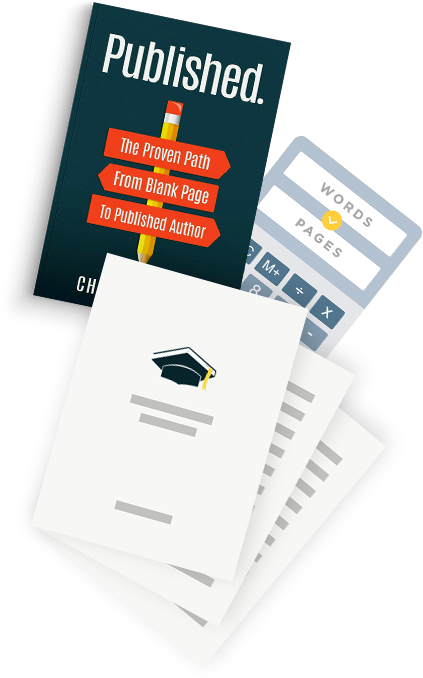In fiction, a narrative type refers to the sequence of events in a story and the way they are presented to the audience. “Narrative type” might refer to the structure, plot, characters, character perspective, and/or the way these elements are used and communicate with one another. Overall, you want these different elements of narration to work together for a cohesive, engaging story.
Here’s how we’ll begin to look at narrative types:
Narrative Types: Point-of-View
The point-of-view of a story is the perspective with which we are viewing the story, either through a character or other narrator. The point-of-view of the narration can affect the amount of information you’re allowed to access as a storyteller, the reader’s closeness with the characters and/or story, and the overall tone of the book.
1. First-person narrative
In this narrative type, the story is told from the perspective of a character within the story using pronouns like “I” and “we.” The reader experiences the events through the eyes of the narrator, who may be a participant or an observer. This point-of-view gets us very close to the character, so if having your reader feel intimacy with the character is important for the story, this might be the POV for you.
2. Third-person omniscient
In this narrative type, an all-knowing narrator tells the story using pronouns like “he,” “she,” and “they.” The narrator has access to the thoughts, feelings, and perspectives of multiple characters, providing a broad and comprehensive view of the story. This POV can “head-hop,” where it access thoughts and observations from any character. It also has information about literally everything in your story’s universe, geographically anywhere, in the past, present, or future.
Storytelling on a larger scale, like we’ll see in fantasy novels, can be easier with third-person omniscient, since we have to build a new world. That’s much simpler when you don’t have to work within a limited perspective.
3. Third-person limited
Similar to third-person omniscient, this narrative type uses pronouns like “he,” “she,” and “they,” but it focuses on the thoughts and experiences of a single character, or few characters. The story is still told from an external perspective, but the reader has access to the inner world of only one character. This is the most common narrative POV in fiction.
4. Second-person narrative
In this narrative type, the story is told directly to the reader, using pronouns like “you.” It creates a sense of immediacy and often makes the reader feel as if they are an active participant in the events of the story. You’ll see this most often in choose-your-own adventure type stories.
The narrative point-of-view you select can dictate how your story is told and how well the audience is able to connect with your character, so be sure to choose the right one for your story and goals.
Narrative Types: Psychic Distance
Narrative style can also include psychic distance, which is the closeness with which your reader interacts with elements of the story.
1. Objective observation
An objective observation narrative in fiction refers to a narrative style where the events and characters are presented in an unbiased and detached manner, focusing on factual description rather than subjective interpretation. In this narrative type, the author strives to portray the story without injecting personal opinions, emotions, or judgments.
Much like third-person omniscient, this psychic distance gives us a Storyteller’s perspective.
2. Indirect thought
The indirect thought narrative type in fiction is a technique that allows authors to convey the thoughts and inner experiences of a character indirectly, without using direct quotations or explicitly stating the character’s thoughts. Instead of explicitly stating what the character is thinking, the narrative subtly implies or hints at their thoughts through various literary techniques.
3. Direct thought
The direct thought narrative type in fiction involves directly presenting the thoughts and inner experiences of a character in a straightforward and explicit manner. It allows readers to have direct access to a character’s thoughts, providing insight into their mindset, emotions, and motivations.
4. Stream of consciousness
This narrative type aims to replicate the flow of a character’s thoughts and perceptions in an uninterrupted and unfiltered manner. Stream of consciousness writing often lacks traditional sentence structure and can be highly introspective and subjective.
Those options range from farthest from your character to nearest. This narrative type is closely related to and works with your POV.
The psychic distance of a story is an element you can manipulate to achieve many different goals.
Narrative Types: Structure
The narrative type can also include the structure of the story, which is basically how the actual story is told. The order in which it happens, who’s telling the story, etc. There are many different types of narrative structure, but here are five common formats.
1. Linear narrative
A linear narrative structure follows a chronological and straightforward progression of events from beginning to end. The story unfolds in a linear fashion, often along plot points. It starts with an introduction or exposition, followed by rising action, climax, falling action, and resolution. This structure is commonly used in many traditional narratives, where the events occur in a linear timeline without significant deviations or disruptions.
2. Non-linear narrative
A non-linear narrative structure deviates from the traditional linear progression and presents events out of chronological order. This can be used for my dynamic or stylistic storytelling. The story may jump back and forth in time, using flashbacks or flash-forwards, or it may present events from multiple perspectives simultaneously. Non-linear structures can create intrigue, suspense, and complexity by challenging the reader to piece together the fragments of the narrative.
3. Quest narrative
The quest narrative structure involves a protagonist embarking on a journey or mission, often with a specific goal or objective to accomplish. The story revolves around the challenges, obstacles, and encounters the protagonist faces during their quest. This structure is commonly found in adventure stories, fantasy epics, and heroic tales, where the protagonist’s journey is central to the narrative.
4. Viewpoint narrative
The viewpoint narrative structure uses different points of view or perspectives to tell the story. It can involve multiple narrators or shifting perspectives within a single narrative. Each viewpoint provides a unique lens through which the events unfold, offering varying interpretations and insights into the story. This structure allows for a multifaceted exploration of characters, themes, and plotlines.
5. Epistolary
An epistolary narrative structure consists of a story conveyed through a series of documents, such as letters, diary entries, emails, or other written correspondence. The narrative unfolds through these written records, often from multiple perspectives or voices. This structure provides a sense of intimacy, authenticity, and immediacy as readers engage with the characters’ personal thoughts and experiences through their written communications. It’s the literary version of a “found footage” film.
Like any literary device, the narrative type you choose to tell your story is totally up to you, and you should base those decisions on what you want your story to accomplish.



